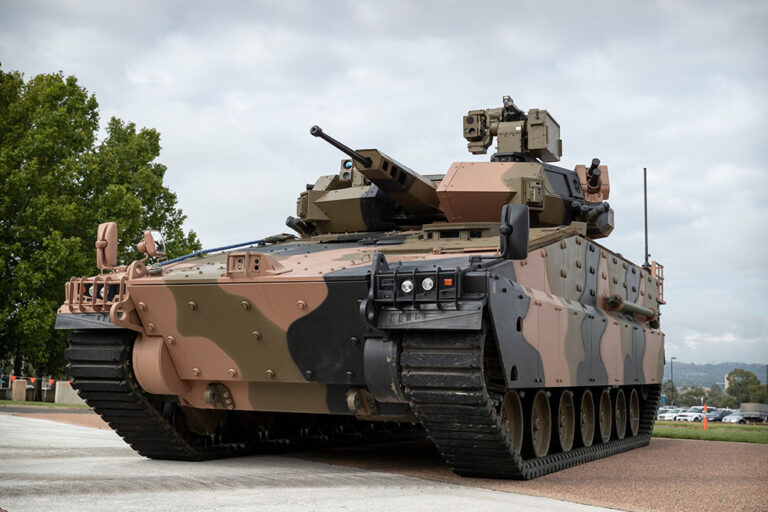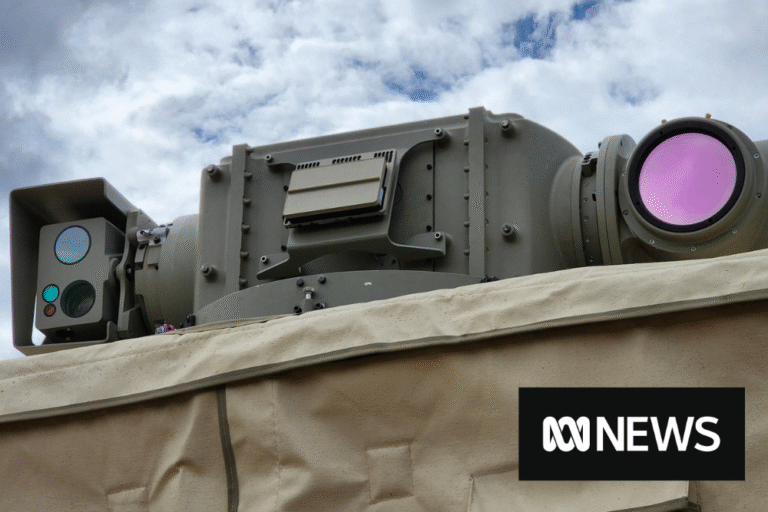

16 May 2025
Homegrown drone killing systems, ADM reports
By Grant McHerron, Australian Defence Magazine
Today’s battlefields demonstrate that Australian military commanders will need the capability to defend against large numbers of nimble, unmanned aerial systems used by opponents for awareness, targeting and attacking.
As Army’s Robotic and Autonomous Systems Implementation and Coordination Office (RICO) recently stated, “The lessons from Ukraine are that drones are a genuine problem and if we don't do anything about it, we’re going to get a rude awakening in the next fight.”
Project Land 156 aims to deliver an integrated solution for 2030 but, as we are repeatedly told, you go to war with the army you have now, not the army you will have later. If in the next few years our troops are required to protect themselves and our installations from drones, they will need a suitable defensive capability now, rather than later.
Meanwhile, the Ukraine conflict is also showing that Group 1 (up to 9kg maximum take-off weight) and Group 2 drones (up to 25kg) are being deployed with spools of ultra-light-weight fibre-optic cable carrying signals between the operator and device. This allows the drones to operate successfully despite the electromagnetic jamming and clutter that would otherwise prevent many drones from even taking off. These developments have resulted in prices of fibre-optic spools becoming even more affordable, indicating that this development and further work in autonomous operations will make kinetic and directed energy solutions an important component in any drone defence system.
Australia has two homegrown suppliers of kinetic or laser counter-drone solutions in the form of Electro Optic Systems (EOS) from Canberra; and AIM Defence from Melbourne. Both companies have solutions available today and both have made sales to military customers who are starting to use their solutions in the real world.
AIM Defence
AIM Defence co-founders Jae Daniel and Jessica Glenn recently told ADM that they consider drones to be the new and existential threat to the way military forces currently operate, and that directed energy weapons will soon be pervasive on the battlefield. As such, their objective is to provide a ubiquitous, tactical solution for mid-level countries that has been designed around protecting a small, mobile team and their vehicle. They see directed energy weapons being as common in the near future as medium-to-heavy machine guns.
AIM Defence’s Fractl Portable High Energy Laser became the ADF’s first directed energy weapon early in 2024. The product can be mounted on a stand for protection at a base or encampment, or attached to one of the antenna mounts on a Bushmaster to facilitate relocation and immediate use in a “shoot and scoot” scenario. Its sophisticated targeting and focusing system, provided through multiple computer vision algorithms, allows it to track an object the size of a 10-cent piece travelling at 100kph from over 1km away.
Unlike many other directed energy systems, Fractl operates at a much lower power rating of about 2kW, providing a very focussed and highly targeted beam, allowing the system to apply energy to a small area of the drone. This allows it to dazzle sensors at a range of 3km, destroy them at 2km and destroy the drone itself at 1km by targeting its centre of mass or one of its propellers.
The system features a self-contained 100kg form factor which can supply up to 50 shots before its battery requires recharging or replacing. If connected to a suitable power supply, the unit can effectively fire forever, only requiring the occasional top up of a water reservoir for its cooling system. Additionally, the laser engine is in a separate container allowing it to be kept within a vehicle’s protected interior while the gimballed targeting/firing head is mounted externally.
Designed to be easy to use, the co-founders told ADM that in fifteen minutes they’re able to train visiting dignitaries how to use Fractl. Soldiers already familiar with laser designators can be quickly trained to transport, set up and use the weapon. The interface makes it a small step to be using the weapon, quickly changing aim between a drone’s sensor, its centre of mass or one of its propellers. Australian Army users have reported it to be like a video game and intuitively easy to track, target and apply against a drone.
The system’s small form factor to both carry and mount, its ease of use, and its effectiveness have resulted in sales to the ADF and a NATO customer, with other NATO militaries investigating and trialling it for use with their forces. Recognition of Fractl’s capabilities has also been boosted through its recent win at the International Counter Drone Sandbox competition that was conducted under the Canadian Armed Forces’ Innovation for Defence Excellence and Security (IDEaS) program.
AIM Defence has established a large indoor test range in Port Melbourne where they are able to rapidly test and refine new ideas for tracking and killing drones in a variety of environmental conditions. While this reduces the lag between concept to first use in the field, it is in the outside world that the real effects of humidity, smoke and heat are truly experienced. Lessons being gained from users and evaluations around the world are refining Fractl’s core algorithms, allowing operational enhancements to be deployed through software upgrades.
The future is looking promising for AIM Defence with plenty of developments ahead. The company is focusing on key markets and managing growth such that they are able to effectively support their clients while retaining their vertically-integrated team structure, their culture of agile innovation, and system production here in Australia. They are also working with universities around Australia to help develop training that maintains the high quality of graduates, and the co-founders are confident that Fractl will be a component in the proposals that get submitted for Land 156.
Electro Optic Systems (EOS)
According to Andreas Schwer, CEO of EOS Group, while electronic warfare will remain part of the counter-drone arsenal, it is increasingly recognised that kinetic and high energy lasers are key to defending against this threat. Schwer has also noted that the most effective strategy is a multi-layered defence approach that integrates both kinetic and non-kinetic technologies.
EOS has developed the Slinger system, a kinetic counter-drone solution, alongside its High Energy Laser Weapon (HELW) system. Both can be deployed as ground-based systems or integrated into vehicles for enhanced mobility. They can operate independently or as a component of EOS’ Titanis counter-UAS system.
While Slinger and HELW will typically be operating against Class 1 and 2 drones, an EOS spokesperson told ADM that Slinger’s 30mm gun or the 100kW HELW can destroy Class 3 drones – which are those with a maximum take-off weight of up to 54kg. They also confirmed that their fire control systems can be integrated with the ADF’s existing Command and Control systems and can be operated remotely, including via SATCOM. When asked about training, they noted that trained soldiers can undertake a two-week conversion course to operate the system.
The Australian-made Slinger system consists of an EOS R400 Remote Weapon System with a Bushmaster 30mm cannon, an Electronically Steered Array (ESA) radar unit and a 4-axis sighting system. Offering extreme accuracy, the lightweight 30mm ammunition can include proximity-fused, high explosive and fragmentation rounds. The entire unit is stabilised to support firing while moving and, at 400kg, can be mounted in suitable armoured or unarmoured vehicles including Unmanned Ground Vehicles, Armoured Personnel Carriers, Protected Mobility Vehicles, and Tanks.
Slinger can accommodate between 200 and 300 rounds, firing at a quoted rate-of-fire of 200 rounds per minute. Given the high precision of the Slinger weapon system, taking down a drone does not require more than five shots, allowing a full magazine to support more than 40 to 50 drone kills before reloading is required.
On the Directed Energy Weapon front, EOS’ HELW operates in the 50kW to 100kW power range and includes radar-based threat detection, rapid acquisition, targeting, and safety systems. Its battery pack can support 100 to 300 engagements depending on the power level used and its range spans from 200m to 3km. If connected to an external power source, the HELW can support continuous, uninterrupted firing over several thousand hours of operation, provided its cooling needs and electrical power are met.
Developed and produced by EOS in Singapore, the HELW can be integrated into vehicles such as armoured 8x8 tactical units to provide agility and a high level of dynamic response. It can also be supplied in a container which, if required, can include a generator for recharging the unit’s battery pack. The containerised solution allows the unit to be deployed at bases and other critical infrastructure locations where it can be operational, if required, within minutes of being deployed.
EOS has supplied the Slinger to Ukraine where it has been used in coordination with Northrop Grumman’s Mobile-Acquisition, Cueing and Effector (M-ACE) system, and is mounted on a vehicle such as a heavy four-wheel drive. As for HELW, while they have not yet sold any units, they are currently in final negotiations with two undisclosed international clients, which would include the option of transferring the related intellectual property to the clients’ countries.









